Some photos from Mars are causing a stir. The human eye thinks it can recognize shapes and patterns in images of bizarre rock formations that don’t belong on Mars. Let’s look at the strangest of the Martian illusions.
The Mars Rover Curiosity probe sent back to Earth a picture of an amazing illusion – a rocky formation that looks like a giant hovering spoon. This strange feature is most likely a rock shaped by the wind. The rarefied atmosphere on Mars, combined with a weak gravitational pull, allows the wind to create such strange rock formations more easily than on Earth, the researchers say.
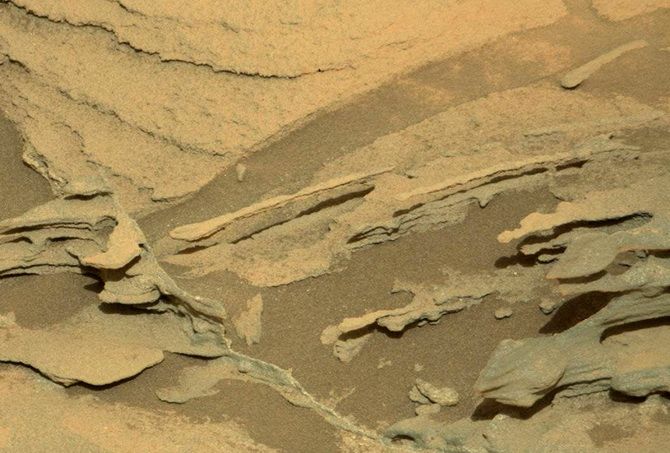
NASA’s Viking 1 spacecraft photographed a site in the northern latitudes of Mars on July 25, 1976, while searching for a landing site. In the image, one of the hills has the shape of a human face. Even after many years, The Face on Mars still creates myths and conspiracy theories. Many believe that this is an artificial structure built by an ancient Martian civilization. But science says it’s just the effect of pareidolia, which causes our brains to see faces where there aren’t any.
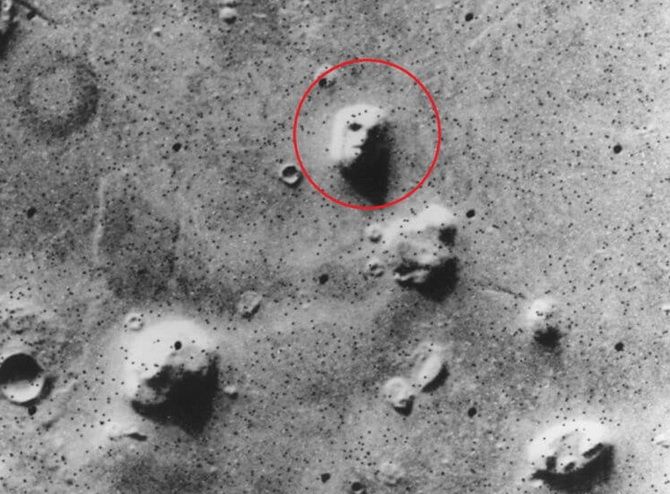
Some winding channels carved into the Martian surface resemble spiders or trees. Unusual landscape features on Mars may be shaped by springtime emissions of carbon dioxide from beneath the frozen polar ice cap. On Mars, as on Earth, the seasons change as the planet revolves around the sun. In winter, in the southern hemisphere, some of the carbon dioxide in the planet’s atmosphere freezes, forming a translucent cap. As summer approaches, all of the ice evaporates, leaving only intricate scars on the Martian surface from the escaping gas.

A picture taken by the European Space Agency (ESA) shows a blue spider spreading its furry legs. These patterns are actually located on ridges on the surface of Mars, which, due to the special topography, are prone to the formation of tornadoes. When a tornado sweeps quickly over a ridge, it removes surface soil and exposes a fresh bottom layer, making the new soil look strange.
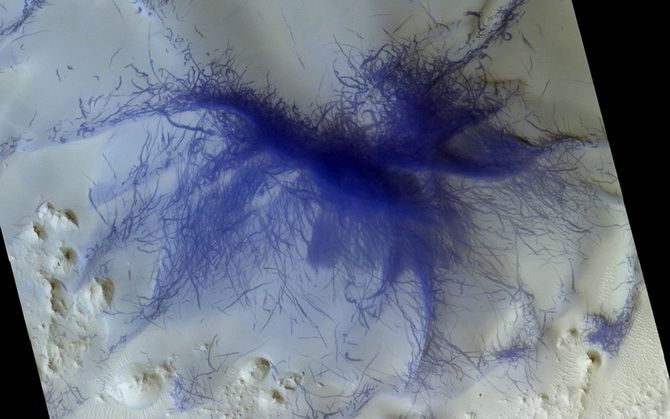
The Perseverance rover found a green stone 15 cm long of an unknown rock in the Martian crater Jezero. Scientists have proposed two hypotheses, one of which claims that this is a piece of Mars, and the second that it is a meteorite.
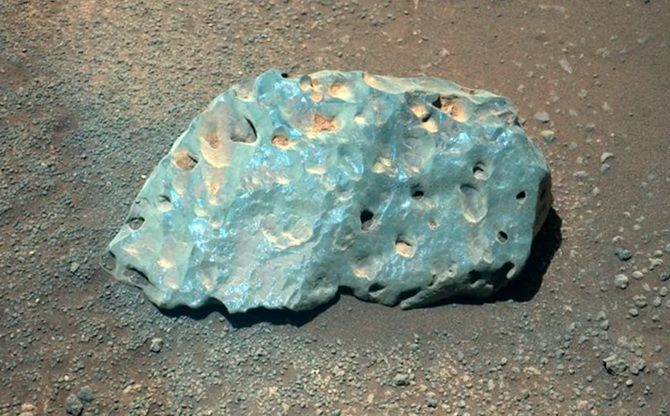




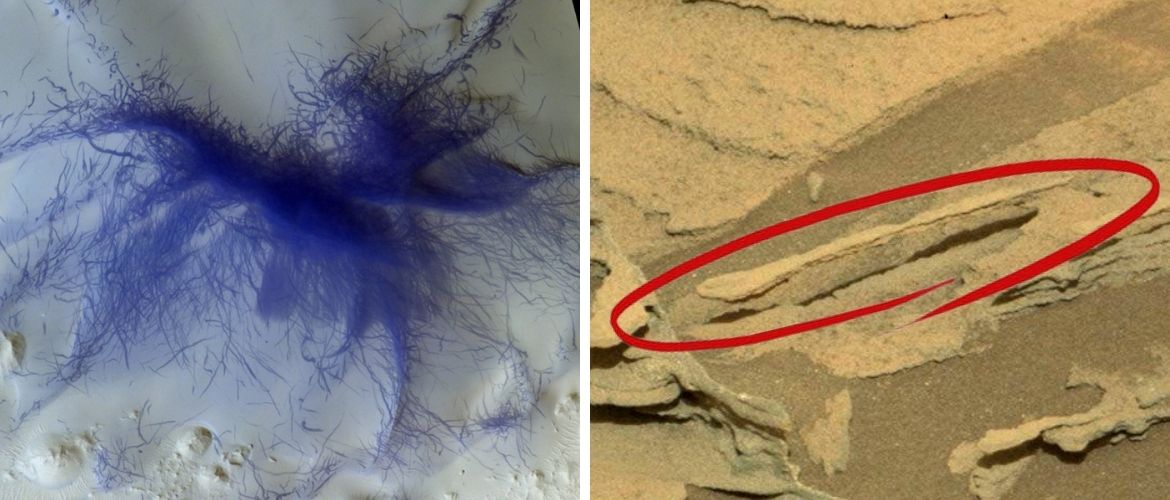


Only registered users can leave comments